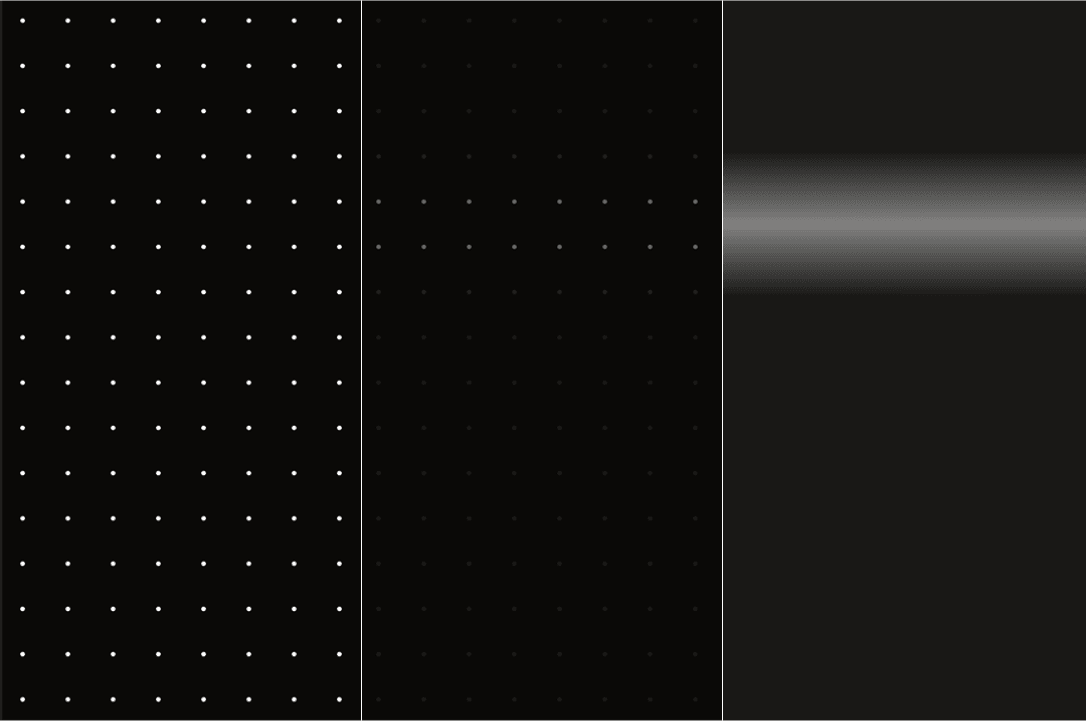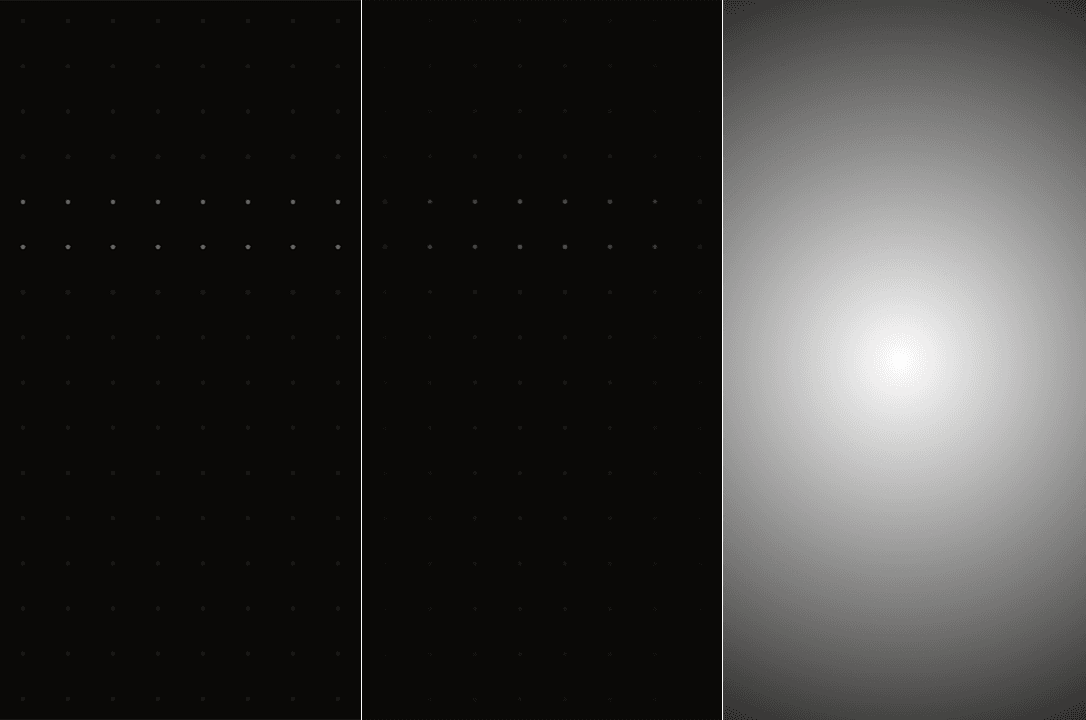One of the most unexplored form inputs in UI design is the radio input. Why limit ourselves to simple circles and a dot? So here's an elegant, sleek, and modern radio input. My love for grayscale, glares, and gradients is evident in this design.
One of the creative challenges I faced was building the background pattern. The effect starts with a dot pattern made using a <circle /> element.
<pattern
id="dots-pattern"
width="20"
height="20"
patternUnits="userSpaceOnUse"
>
<circle cx="1" cy="1" r="1" fill="white" />
</pattern>
<mask id="mask-dots">
<rect width="100%" height="100%" fill="url(#dots-pattern)" />
</mask>
<pattern
id="dots-pattern"
width="20"
height="20"
patternUnits="userSpaceOnUse"
>
<circle cx="1" cy="1" r="1" fill="white" />
</pattern>
<mask id="mask-dots">
<rect width="100%" height="100%" fill="url(#dots-pattern)" />
</mask>
We then build a <linearGradient /> who's stop-color values are manipulated using Framer Motion based on the selected option.
const motionTransition = {
type: "spring",
stiffness: 75,
damping: 25,
};
<linearGradient id="linear-gradient" x1="0%" y1="0%" x2="0%" y2="100%">
<motion.stop
stopColor="rgba(250, 250, 250, 0.06125)"
initial={false}
animate={{
offset: gradientTop - gradientHeight + "%",
}}
transition={motionTransition}
/>
<motion.stop
stopColor="rgba(250, 250, 250, 0.5)"
initial={false}
animate={{
offset: gradientTop + "%",
}}
transition={motionTransition}
/>
<motion.stop
stopColor="rgba(250, 250, 250, 0.06125)"
initial={false}
animate={{
offset: gradientTop + gradientHeight + "%",
}}
transition={motionTransition}
/>
</linearGradient>;
const motionTransition = {
type: "spring",
stiffness: 75,
damping: 25,
};
<linearGradient id="linear-gradient" x1="0%" y1="0%" x2="0%" y2="100%">
<motion.stop
stopColor="rgba(250, 250, 250, 0.06125)"
initial={false}
animate={{
offset: gradientTop - gradientHeight + "%",
}}
transition={motionTransition}
/>
<motion.stop
stopColor="rgba(250, 250, 250, 0.5)"
initial={false}
animate={{
offset: gradientTop + "%",
}}
transition={motionTransition}
/>
<motion.stop
stopColor="rgba(250, 250, 250, 0.06125)"
initial={false}
animate={{
offset: gradientTop + gradientHeight + "%",
}}
transition={motionTransition}
/>
</linearGradient>;
Putting them together, we create a <mask /> using these two to make the dots brighter when the linear gradient's position is near them. It works by making parts of the <rect /> be transparent where the "dots pattern" is black. The remaining parts are the white dots themselves, which show the linear gradient behind them being used as a fill.
<mask id="mask-dots-on-linear">
<rect
width="100%"
height="100%"
fill="url(#linear-gradient)"
mask="url(#mask-dots)"
/>
</mask>
<mask id="mask-dots-on-linear">
<rect
width="100%"
height="100%"
fill="url(#linear-gradient)"
mask="url(#mask-dots)"
/>
</mask>

combining the dots pattern and the linear gradient
While this by itself achives the effect we were going for, the finishing touch comes with the use of a <radialGradient /> on which the mask will be used over. This gives the highlighted area a more organic and dynamic shape, giving off the impression of a light source.
<radialGradient
id="radial-gradient"
cx="50%"
cy="50%"
r="40%"
fx="50%"
fy="50%"
>
<stop offset="0%" stopColor="white" />
<stop offset="100%" stopColor="rgba(250, 250, 250, 0.125)" />
</radialGradient>
<radialGradient
id="radial-gradient"
cx="50%"
cy="50%"
r="40%"
fx="50%"
fy="50%"
>
<stop offset="0%" stopColor="white" />
<stop offset="100%" stopColor="rgba(250, 250, 250, 0.125)" />
</radialGradient>
And now we finally apply the radial gradient as a fill to our main <rect />, and use the mask we created earlier, to achieve the final effect.
<rect
width="100%"
height="100%"
fill="url(#radial-gradient)"
mask="url(#mask-dots-on-linear)"
/>
<rect
width="100%"
height="100%"
fill="url(#radial-gradient)"
mask="url(#mask-dots-on-linear)"
/>

combining our effect and the radial gradient
There's something beautiful about exploring unchartered territories, even for something as simple as a radio input. It's a reminder that there's always opportunities to innovate and create something new.

